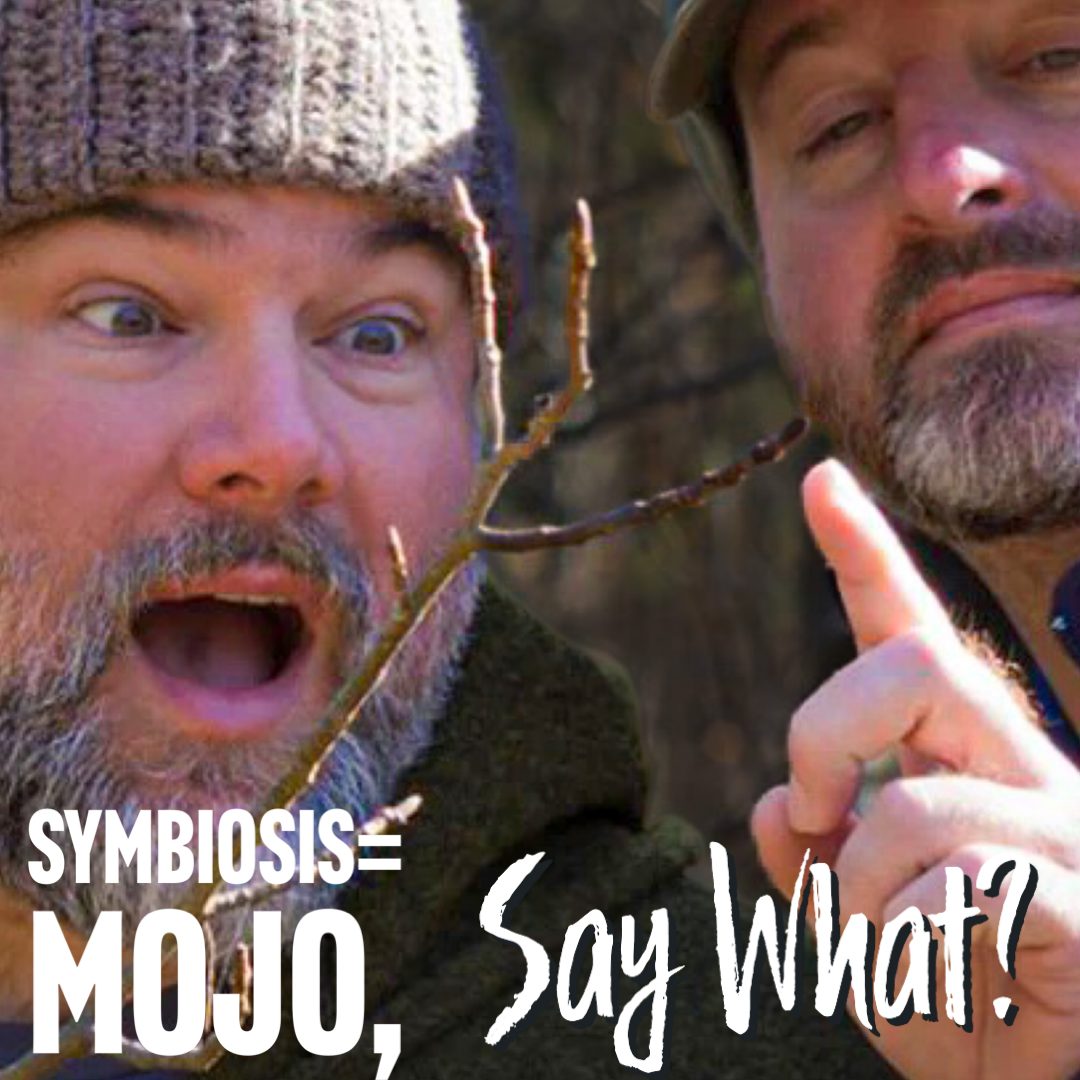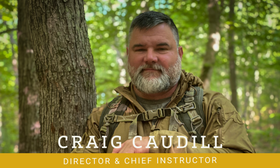
Symbiosis=Mojo, Say What?
Photo Credit to Jennifer Caudill of Craig Caudill and Tracy Trimble being Craig and Tracy.
Symbiosis - a mutually beneficial relationship between different organisms, people or groups.
Mojo - personal confidence and charisma as it relates to relationships.
I may have taken a couple of liberties when writing the definition of mojo above (found this one in the urban dictionary), but it fits that narrative I am crafting here so stay with me on this.
There are many different interconnected pieces as it relates to outdoor recreation and environmental education. It does not matter if that piece is learning how to build a bow-drill fire or learning how to accurately do winter tree identification. There are many different systems or parts in doing these things well.
In environmental education, we often speak of the water cycle, the food web, and similar interconnected pieces of the great outdoors. Anytime we speak of the environment, more often than not, we speak of the human component of nature and how we as a species interact with it. Nature can be a great teacher all on its own and you will be well served to use nature and the lessons from it as your teacher. If you hang around me in the woods I will inevitably refer to the woods mojo. That is simply me personifying the way the woods has a certain "way" about it that serves as an excellent teacher. Another common phrase I say along these lines, is "learn how to work with the woods, and the woods will work with you.".
However, I wonder. Can the teacher-student relationship be enhanced or at least understood in a way that allows for this same natural symbiotic relationship? I humbly submit to you that it is absolutely necessary for this to happen for there to be productive growth on the part of both student and teacher. I recently wrote a blog piece in a moment of bitterness (just being honest here) about overcoming bravado and cockiness in the survival and bushcraft communities. In it I offered some alternatives to such behavior. Fast forward to my day yesterday.
I spent the day yesterday before lunch, volunteering my time at an area middle school doing some interesting work with some great students. I then met up with a new friend of mine, who has shown a sincere interest in learning Wilderness Navigation. He spends a lot of time outdoors and will most likely come to a Land Nav class with us, but before that can happen he is going to continue a lot of time outdoors and I simply wanted to make sure he could explore a bit more safely.
On my return home yesterday I received thank you messages from school personnel and that friend of mine. In a discussion with my friend, I told him a simple truth. The truth is that teachers can't be teachers without students. We need one another for growth. As an example, it is that simple text from him (and only 3 hours of sleep) that prompted me to write this blog piece today. His kindness towards me in thanking me gave me pause to reflect on the opportunity I have been given to teach, and to learn from other great teachers myself. It is quite a natural cycle of a teacher/researcher who continues to hone, expand, or develop the hard skills of the outdoors and soft skills of leadership and instructing others.
In my personal life, I have many people who blur the lines between who is the teacher, and who is the student. First on this list is my wife Jennifer, who teaches me and inspires me every day in many ways. As I get older I am discovering more and more that the husband and wife relationship is an entirely unique one in the works of nature. There are many reasons why most every culture and religion in the world holds that relationship in high regard. There are times when she leads, and times when I lead and times when she is weak and I am strong. As well as times when I am weak and she is strong. It is a dynamic that at 50 years old and 27 years of marriage, I am finding remarkable in so many ways. After careful consideration, I must say that it is not really a blurring of lines, but rather there are no lines of student-teacher. We just share with one another what know.
Another is my relationship to Tracy (pictured together above when we were mugging for the camera after a day filming winter tree ID information). It is funny there are many times when Tracy and I don't agree on things. There are times when we quietly, without saying much, just don't need to see or talk to one another. I laugh as I write this. However, there is a complete missing "line" if you will between teacher and student. There are many things he has taught me, and I have taught him. The labels, of the teacher and student, don't really apply to us.
I don't like labels all that much anyway.
Quite frankly that is my goal with all my instruction interactions (and to get back to the original thought of the blog piece). My goal is to have a symbiotic (mutually beneficial relationships) with those that I am given the opportunity to teach and to not take lightly the opportunities I am given to learn from others.
In a recent discussion in our Facebook Group we were discussing a meme that accented the importance of developing a good "survival" team. It was obvious that it was important to those there that the people that surround you need to be the best they can be. Also, that everyone should cross-train one another so that if something were to happen to anyone in the group, the group can continue to move forward. That should be true for any group or organization in my opinion. Teachers teaching students, students learning form teachers and teachers learning from students as well. A true symbiotic relationship where the foundation is the mutual benefit and welfare of everyone involved.


Leave a comment